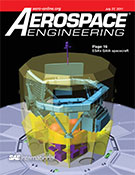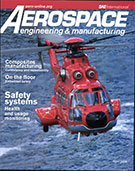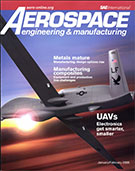Technical Paper
Automated Removal of Prepreg Backing Paper - A Sticky Problem
2013-09-17
2013-01-2289
Automated solutions for manufacturing composite products based on prepreg often imply Automatic Fiber Placement or Automatic Tape Laying. These systems are generally associated with huge investments. For certain manufacturing applications it is interesting to investigate alternatives to find simpler and less costly automation. One example of an automated system could be the use of a standard industrial robot to pick single prepreg plies from an automated cutting machine and stack them to form a plane laminate. This paper is based on a case illustrating a product from the aircraft manufacturing industry. The case will demonstrate a pick and place concept on a general level and illustrate challenges that must be solved. The challenge selected to be the main focus for this paper is an automated process for backing paper removal. A literature review of different gripping technologies reveals several interesting technologies, and the most promising are tested for backing paper removal.











